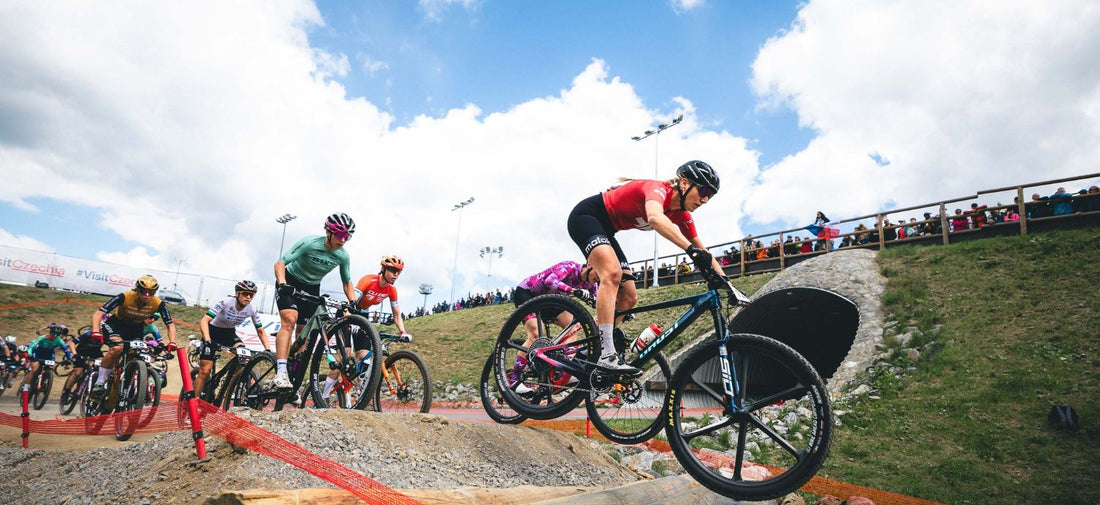
How to Fix Hip Joint Pain from Cycling
Cycling is a fantastic way to stay fit, but hip joint pain can turn your rides into a painful ordeal. Whether you're a casual rider or a seasoned cyclist, understanding the causes of hip pain and how to address them can keep you pedaling comfortably. This guide explores why hip pain occurs, its main causes, and practical steps for quick relief.
Why Cyclists Experience Hip Joint Pain
Hip joint pain is a common complaint among cyclists, often resulting from the unique demands of the sport. The hip joint, a ball-and-socket structure, is critical for transferring power from your legs to the pedals, but it’s also vulnerable to stress and strain.
Understanding the underlying reasons for hip pain can help you take targeted steps to alleviate it. Below, we break down the primary factors contributing to hip joint discomfort in cyclists, from biomechanical issues to physical conditioning.
Repetitive motion and joint compression
Cycling involves thousands of pedal strokes per ride, which can compress the hip joint over time. This repetitive motion, especially during long rides, can lead to inflammation or discomfort in the hip joint, particularly if your body isn’t properly aligned or conditioned.
Poor bike fit or saddle position
A bike that doesn’t fit your body properly is one of the leading causes of hip pain. If your saddle is too high, your hips may rock side to side to compensate, placing undue stress on the joint. Similarly, a saddle that’s too low can force your knees and hips into awkward angles, leading to discomfort.
The saddle’s tilt also matters too much upward or downward tilt can shift pressure to the hips, causing strain. A professional bike fitting can make a significant difference in aligning your bike to your body’s unique geometry.
Bad non-cycling and soft/spongy insoles
Insoles, especially those designed for cycling, can provide good arch support, which
can be helpful in treating hip pain by improving foot alignment and taking pressure
off the hip joints, especially if the pain is caused by muscle tightness or uneven leg
lengths.
Carbon cycling insoles can help correct pronation or supination, which can contribute
to hip pain, by improving weight distribution in the body.
Discover how SOLESTAR cycling insoles can support your feet and help eliminate hip pain.

Main Causes of Hip Pain During Rides
While the general reasons for hip pain provide a foundation, specific factors during your rides can amplify discomfort. These issues often stem from a combination of riding habits, physical limitations, and equipment setup. By identifying and addressing these causes, you can reduce hip pain and improve your overall cycling experience. Let’s explore the key contributors to hip pain during rides and how they manifest on the bike.
Overuse without proper recovery
Pushing yourself on back-to-back rides without adequate rest can lead to overuse injuries. Without proper recovery, the hip joint and surrounding muscles don’t have time to repair, leading to persistent pain or inflammation.
Limited hip mobility and muscle imbalance
Limited range of motion in the hips, often due to tight muscles or weak stabilizers, can cause compensatory movements that strain the joint. Muscle imbalances such as strong quads but weak glutes can further contribute to uneven stress on the hips.
Incorrect pedaling biomechanics
Pedaling with improper form, such as excessive knee wobble or uneven power distribution, can place undue stress on the hips. This is often linked to poor bike fit or lack of core strength, which affects how force is transferred through the pedals.

Quick Relief for Hip Pain While Riding
If hip pain is disrupting your rides, you don’t have to suffer in silence. These practical solutions can provide immediate relief and help you get back to enjoying your time on the bike:
Lower saddle or adjust tilt slightly
An incorrectly positioned saddle is often the culprit behind hip pain. If your saddle is too high, your hips may rock excessively, leading to joint strain. Lowering the saddle by 3-5mm can help stabilize your pelvis and reduce stress.
Additionally, adjusting the saddle tilt typically a slight upward tilt of 1-2 degrees can distribute pressure more evenly. If you’re unsure about your bike fit, consider visiting a professional fitter who can assess your position using tools like motion capture or pressure mapping.
Stretch hip flexors before and after rides
Tight hip flexors are a common issue for cyclists, as the seated position shortens these muscles over time. Incorporating dynamic stretches before rides and static stretches afterward can improve flexibility and reduce pain. A simple hip flexor stretch involves stepping into a lunge with one foot forward, keeping the back knee on the ground, and gently pushing your hips forward. Hold for 20-30 seconds per side, repeating 2-3 times. Post-ride, consider adding a pigeon stretch to target the hip rotators and glutes for deeper relief.

Conclusion
Hip pain can be a frustrating hurdle for cyclists, but it doesn’t have to sideline you. Common causes include poor bike fit, muscle imbalances, and repetitive motion. Quick fixes like adjusting your saddle, stretching, and upping your cadence can help, while long-term relief comes from strengthening hips, improving core stability, and proper recovery.
A well-fitted bike and good technique are key. If pain persists, consult a specialist to rule out deeper issues. With the right steps, you can ride stronger and enjoy every mile.
If you have questions, you can contact us at: info@solestar.com

